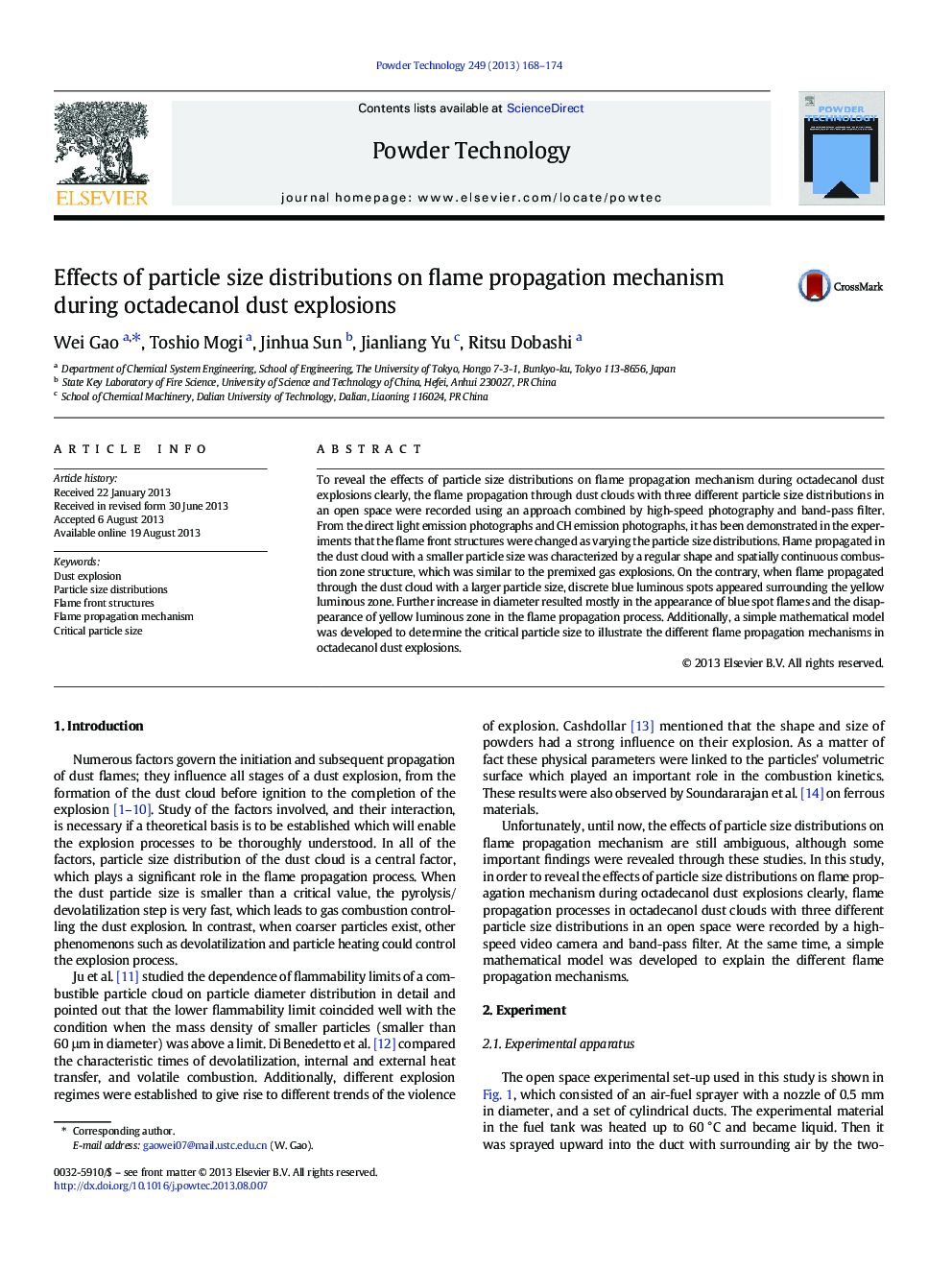| Article ID | Journal | Published Year | Pages | File Type |
|---|---|---|---|---|
| 236328 | Powder Technology | 2013 | 7 Pages |
•Flame was characterized by spatially continuous structure in finer dust cloud.•Discrete blue luminous spots appeared in coarser dust cloud.•Flame propagation mechanism was different with the relay ignition mechanism.•Concentration of particles smaller than 61 μm was the critical condition.
To reveal the effects of particle size distributions on flame propagation mechanism during octadecanol dust explosions clearly, the flame propagation through dust clouds with three different particle size distributions in an open space were recorded using an approach combined by high-speed photography and band-pass filter. From the direct light emission photographs and CH emission photographs, it has been demonstrated in the experiments that the flame front structures were changed as varying the particle size distributions. Flame propagated in the dust cloud with a smaller particle size was characterized by a regular shape and spatially continuous combustion zone structure, which was similar to the premixed gas explosions. On the contrary, when flame propagated through the dust cloud with a larger particle size, discrete blue luminous spots appeared surrounding the yellow luminous zone. Further increase in diameter resulted mostly in the appearance of blue spot flames and the disappearance of yellow luminous zone in the flame propagation process. Additionally, a simple mathematical model was developed to determine the critical particle size to illustrate the different flame propagation mechanisms in octadecanol dust explosions.
Graphical abstractFlame propagation through octadecanol dust clouds with three different particle size distributions were recorded using an approach combined by high-speed photography and band-pass filter to reveal the effects of particle size distributions on flame propagation mechanism during organic dust explosions.Figure optionsDownload full-size imageDownload as PowerPoint slide
